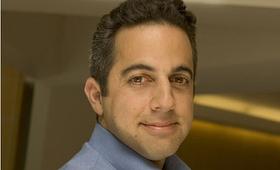 In case you haven’t noticed, the global, early-stage venture firm DCM has been killing it in recent years. Since 2009, 15 of its portfolio companies have exited, many through highly successful IPOs. For example, DCM owned 20 percent of the China-based online retailer VIPshop when it went public in 2012 with a market cap of $600 million. Today, the company is valued at $8.7 billion.
In case you haven’t noticed, the global, early-stage venture firm DCM has been killing it in recent years. Since 2009, 15 of its portfolio companies have exited, many through highly successful IPOs. For example, DCM owned 20 percent of the China-based online retailer VIPshop when it went public in 2012 with a market cap of $600 million. Today, the company is valued at $8.7 billion.
Eighteen-year-old DCM, which invests in the U.S, China, and Japan, doesn’t appear to be resting on its laurels. This morning, the firm is announcing its seventh, $330 million, venture fund. It’s also disclosing that longtime general partner Carl Amdahl and general partner and cofounder Dixon Doll will no longer be investing in new companies on behalf of the firm, a plan that has been in the works for several years, says general partner Jason Krikorian. (A third general partner, Gen Isayama, who opened DCM’s office in Tokyo in 2009, left last year to launch a new fund, which StrictlyVC wrote about in January.)
On Tuesday, I chatted with Krikorian about the latest developments at the firm. Here’s part of that conversation, edited lightly for length.
DCM clearly could have raised a bigger fund. Why didn’t it?
For a few reasons. First, it has to do with where we think the sweet spot is, meaning the amount of money that [early-stage] investors should manage, and we think it’s between $50 million and $60 million per GP. [Editors note: DCM now has six active GPs.]
This new fund also marks a bit of a transition for Dixon and Carl and it’s important for LP relations to have a long-planned out transition period; it’s part of the reason I was brought in [in 2010]. Also, it’s very tempting for funds to get bigger, but we think small teams operate better.
DCM invests in three geographies. Which of them attracts the most of the firm’s capital?
In the past, it’s really been balanced, with half in the U.S. and half in Asia, which is still dominated by China. Our returns in Japan have been good but there are far fewer startups to see; Japan still has a big company culture, so the best and brightest still go that route.
You raised your sixth fund in 2010, but you assembled a couple of other side vehicles around the same time, right?
Yes, we had raised [DCM VI] when I first joined, and we created two other funds simultaneously. One was an RMB (yuan) fund that primarily focused on later-stage China investments that we’d invested in [and wanted to back again]. We used that, for example, to invest more in both VIPshop and 58.com. It was a fund that we invested at basically $15 million a pop.
The other fund was an Android fund that was backed by Asian-based corporates in China, Japan and Korea that viewed Android as a significant global opportunity. Some of the key LPs of that fund are [the Chinese investment holding company] Tencent, KDDI [which is one of Japan’s largest mobile phone operators], and NHN [which owns one of the largest search engines in South Korea].
That fund has also been really great and given us a lot of flexibility to do deals where we put in a few million dollars at a valuation in the high, double-figure millions, including [South Korean messaging company] Kakao, which now has something like 95 percent penetration of the [regional] population. [Editor’s note: The WSJ recently reported that the company is talking with bankers about an IPO that would value it at $2 billion.]
Will we see you raise similar side funds this time around?
There’s interest [from LPs] as you might imagine, but we don’t have any definite plans to do [either]. We kind of view this new fund as a consolidation of those efforts.
You had a personal win this week with the wearable device maker Basis, the first deal you led for DCM. How has the wearables and hardware space changed in the three-plus years since you made that investment?
There’s a perception that this is a great time for hardware companies, and I think it’s true. There’s a more cooperative supply chain, [booming] capital markets, and a more favorable marketing environment with social media and blogs, so word gets out about great products.
But I still think VCs are primarily funding the aggressive growth of the guys who’ve really broken out, so Fitbit, Jawbone, Nest. I still think there’s a lack of comfort around funding early-stage hardware companies pre-launch…because [a device] isn’t a Web service that can be tweaked. For instance, we backed Whistle [a health monitor for dogs] and 20,000 units just moved onto the shelves at [pet retail giant] Petsmart, and they have to work.
Sign up for our morning missive, StrictlyVC, featuring all the venture-related news you need to start you day.
